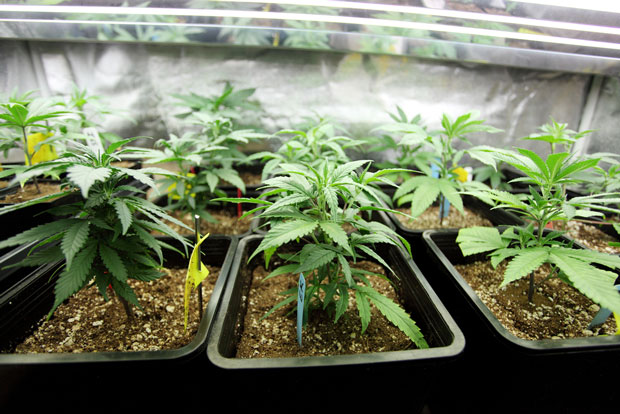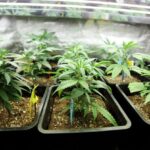What is the impact of the legal pot industry on carbon emissions?
 |
The state must prepare for the energy drain that will accompany legal |
One can excuse Portland State University researchers for not addressing this issue in their recent study modeling a carbon tax on Oregon’s economy. But this morning’s NEBC energy forum breakfast made the case for taking cannabis emissions seriously.
Presenter John Morris, regulatory affairs director at CLEAResult, an energy efficiency consultancy, relayed some alarming facts and figures:
° A single joint is the equivalent of running a 100-watt light bulb for 30 minutes.
° The pot industry has the carbon emissions impact of 1 million cars
° Industrial pot has the same power density as a data center.
° On a recent tour of a Colorado indoor grow facility, Morris bore witness to “600,000 watts of incandescent floor space.”
Once a symbol of the counterculture, marijuana is now aligned with a decidedly more mainstream image: the energy hog.
Moving indoor grow operations outdoors would eliminate much of the burden on the electrical grid — and the atmosphere. But as Morris pointed out, there’s a certain snob factor associated with indoor operations, considered by purveyors to produce a higher quality and more “boutique” product than outdoor facilities.
“Indoor growers want to be Deschutes,” Morris observed, “not Bud Light.”
Morris said growers eschew LEDs in favor of incandescents because the former don’t penetrate all levels of the plant. “Energy efficiency is an afterthought for growers,” he said.
Figuring out to steer the marijuana industry in a low carbon direction is one challenge facing utilities and other stakeholders. Energy Trust, for one, appears poised to create a cannabis division. It’s not hard to imagine the evolution of an organic, GMO-free certification for Oregon branded pot: a LEED for weed, as Morris put it.
Navigating a complicated regulatory landscape — pot is legal in Oregon, illegal according to the feds — is another conundrum for electricity providers.
According to presenter Richard Lorenz of Cable Huston, the U.S. Department of Energy has issued guidelines suggesting providers such as the BPA sell power to utilities, but not directly to growers. Lorenz also discussed different rate pricing models and cautioned utilities to be on the alert for power theft.
The takeaway:
Today’s forum followed yesterday’s OEC’s business and environment gathering on carbon pricing schemes in the Pacific Northwest.
Not so long ago, people thought carbon pricing and legalization of marijuana couldn’t happen here — and that pot and greenhouse gas emissions had little to do with one another. The unexpected juxtaposition of the two trends reinforces a important lesson for 21st century business and thought leaders: Anticipate radical change and think far beyond traditional social, political and industry sector boundaries.
UPDATE: Here are links to the Morris and Lorenz presentations:
[www.nebc.org/_documents/eventfiles/forums/2015_01-28_OR-EnergyForum_Marijuana_Lorenz.pdf]www.nebc.org/_documents/eventfiles/forums/2015_01-28_OR-EnergyForum_Marijuana_Lorenz.pdf
[www.nebc.org/_documents/eventfiles/forums/2015_01-28_OR-EnergyForum_Marijuana_Morris.pdf]www.nebc.org/_documents/eventfiles/forums/2015_01-28_OR-EnergyForum_Marijuana_Morris.pdf




